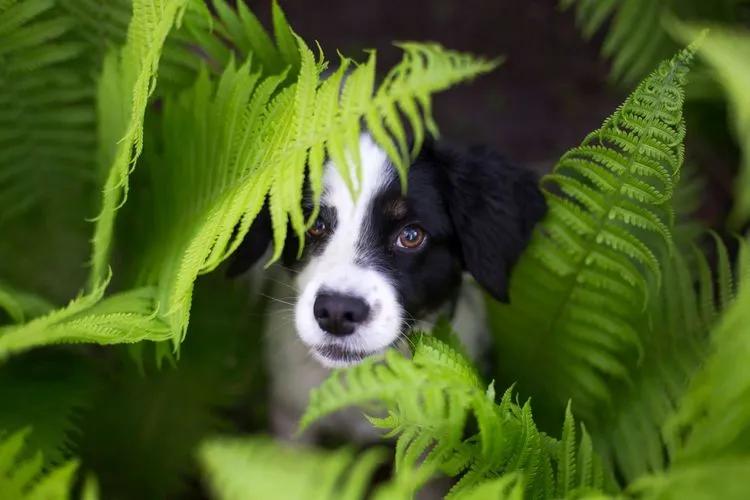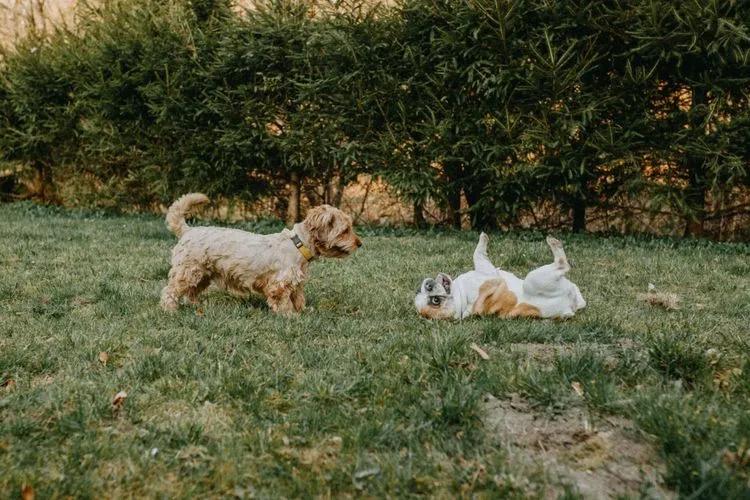 To make your garden a safe and fun place for dogs and cats is indeed easy. Although, it takes planning and practice. Think about your pet's needs and behaviors, and then use positive reinforcement to maintain their best behavior in your garden. Dogs may be deterred by natural repellents such as citronella grass (Cymbopogon nardus) or some scented geraniums (Citronella pelargonium), but they may love to be treated to low-hanging blackberries or cherry tomatoes.
To make your garden a safe and fun place for dogs and cats is indeed easy. Although, it takes planning and practice. Think about your pet's needs and behaviors, and then use positive reinforcement to maintain their best behavior in your garden. Dogs may be deterred by natural repellents such as citronella grass (Cymbopogon nardus) or some scented geraniums (Citronella pelargonium), but they may love to be treated to low-hanging blackberries or cherry tomatoes.
Give shelter
The first step is to make sure your pet has a shaded area to be protected from the sun. Whether it's a kennel, a covered terrace or porch, or a shady tree, it's important that your pet has a place to hide when the sun gets too bright. The shade will move as the sun moves throughout the day, so you should have more than one place for your pet to rest, especially during the hottest hours of the day.
Access to water
 No pet should be kept outdoors without access to fresh drinking water. Make sure water is clean, cool and not toppled over. If you fill the water tank with a garden hose, make sure it is lead-free and labeled “safe for drinking water”.
No pet should be kept outdoors without access to fresh drinking water. Make sure water is clean, cool and not toppled over. If you fill the water tank with a garden hose, make sure it is lead-free and labeled “safe for drinking water”.
Be careful with poisonous plants
Some of the plants in your garden can be very toxic. Most animals know which plants are poisonous, and even when they are eating the wrong things, they usually spit them back out in a fairly short time. But it's good to know which plants are toxic so you can remove them, take steps to keep your pets away from them, or at least know what signs to look out for in case of poisoning. Some common plants that are toxic to animals include lilies, daffodils, oleanders, tulips, azaleas, and sago palms.
Beware of other toxins
Your pet is likely to be poisoned by fertilizers and soil additives rather than toxic plants, so make sure all containers of pesticides and fertilizers are in a safe place out of your pets' reach and away from their water bowl. Don't assume organic foods are safer than synthetic ones. Additives such as bone meal, fish emulsion, and cocoa bean husks used as mulch can smell pleasant to animals, but can cause severe illness in them.
Use plants to attract and repel
If you can't use a fence to keep your pet out, you can use plants to scare them away from some areas and attract them to others. Tall or thorny plants can serve as a barrier, and plants with a pleasant smell or fruit can lure animals into parts of the garden that you want to be pet friendly. Cats don't like citrus scents, but they do like catnip, catnip, and cat thyme.
Define restricted areas
 It is not necessary to give your pet all the opportunities in the garden. Decide which parts of your garden are open to your pet and which are not. For example, swimming pools, ponds, and fountains can be dangerous to some animals, and you can restrict their access to these areas. You can create an enclosed space, such as a fenced-in dog walking area or “catio,” to which your pet has full access. Make sure that any fence or cage you use not only keeps your pet out, but also protects from predators. And remember: you should never leave a tied animal in the yard unattended.
It is not necessary to give your pet all the opportunities in the garden. Decide which parts of your garden are open to your pet and which are not. For example, swimming pools, ponds, and fountains can be dangerous to some animals, and you can restrict their access to these areas. You can create an enclosed space, such as a fenced-in dog walking area or “catio,” to which your pet has full access. Make sure that any fence or cage you use not only keeps your pet out, but also protects from predators. And remember: you should never leave a tied animal in the yard unattended.
Remember these tips:
- Your garden should be completely dog-safe. Therefore, make sure that there are no holes in the fence for the puppy to crawl through. Fences are firmly dug into the ground and you cannot dig a hole under them.
- Some dog breeds (in particular, terriers) are known for their ability to dig holes, so try to regularly survey the garden and bury any holes. You can avoid unwanted pits in the area by simply setting up a sandbox for your pet to play and dig around in.
- Some dogs cannot resist the temptation to pluck or dig plants or flowers out of the ground, so you will have to install a fence to keep your petunias from encroaching on a four-legged friend!
- Remove rope ladders and anything else your pet might catch inadvertently from the garden. Also, try to fence off or hard-cover your pool or hot tub when not in use. If your dog spends part of the day or night in the garden, place a waterproof and wind-proof house there specially for him, which can also serve as reliable protection for your pet from the sun on hot days. If the outside temperature is abnormally high or low, be sure to take your dog into the house, even if he constantly lives outside.
- Only absolutely safe and healthy plants for dogs should grow in your garden. To avoid food poisoning or rashes on your pet's skin, exclude all plants you do not know from the garden. Poisonous to dogs are lilies, azaleas, yellow daffodil, tomatoes, foxglove, yew and hydrangeas. If an animal has eaten a poisonous plant, take a sample, if possible, and contact your veterinarian immediately.
- You need to wean your puppy from chewing whatever it finds in the garden. And you need to quickly contact your veterinarian if you suspect that your pet has eaten something dangerous.
- Never use pest control products, herbicides or rat poison in the garden, as these are extremely toxic substances. An exception can be made only for those products, the packaging of which indicates that they are absolutely safe for pets.
